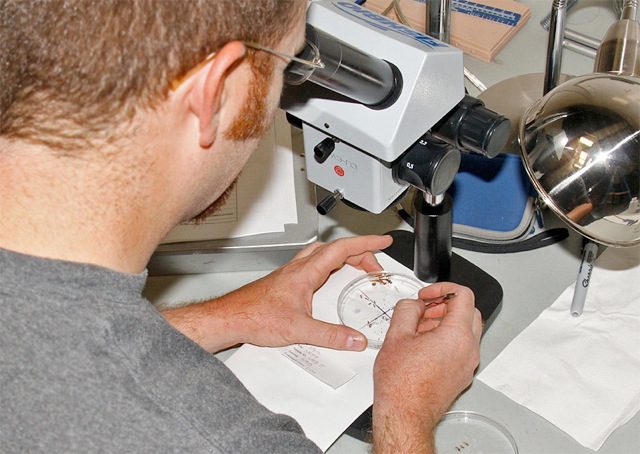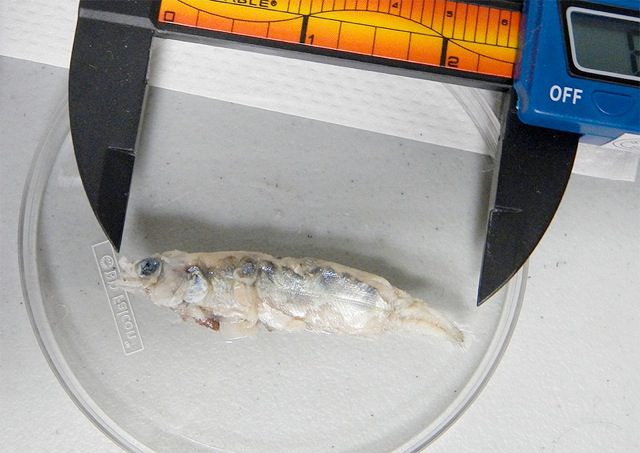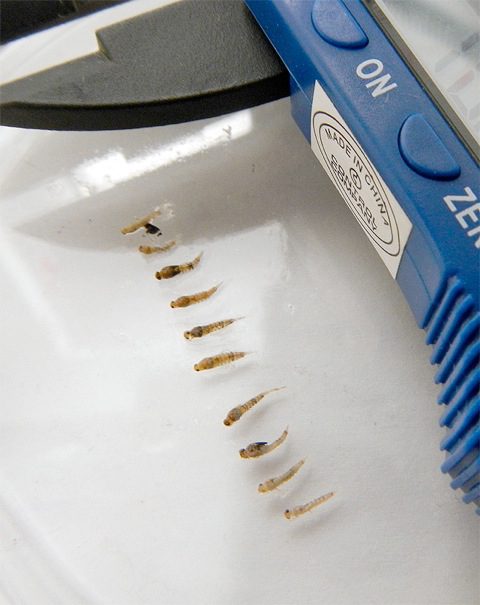Wednesday May 30, 2012

Determining the last meal of predatory fish is no easy matter. Over the past several weeks we collected hundreds of stomach samples from predatory fish and now we are undertaking the daunting task of identifying the contents of those samples. Unlike other forms of sampling, stomach contents aren’t always easily identified due to digestive processes. Soft tissue of prey items can begin to digest immediately after entering a fish’s stomach, so sometimes the only things recovered are hard structures like bones and exoskeletons. In cases where standard visual identification methods cannot be used, we’re using diagnostic bones to identify and to estimate the original length of the consumed item.
Bones found in the head of fish (primarily cleithra and dentaries) have been used successfully to identify prey species in stomach samples (Hansel et al. 1988). This type of analysis is time-intensive due to the structure of these bones. The cleithra and dentaries are small (typically less than a centimeter long), paper thin, and nearly transparent. Once the bones are picked out of the stomach samples, they are identified to species and measured. Expect to see more posts on some of the peculiar items we discover in these fish as we continue the tedious process of analyzing their last meal!



